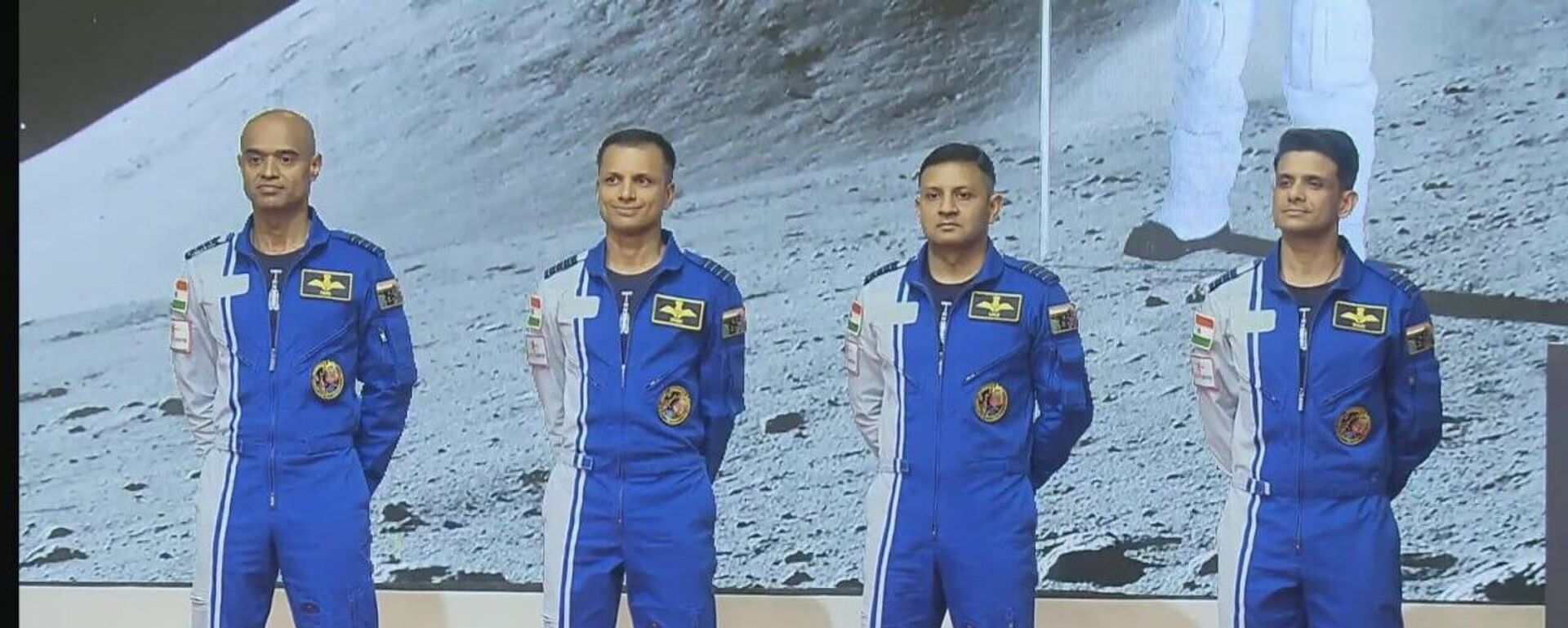https://sputniknews.in/20240305/isro-identifies-48-emergency-landing-sites-for-return-of-gaganyaan-astronauts-6748094.html
ISRO Identifies 48 Emergency Landing Sites for Return of Gaganyaan Astronauts
ISRO Identifies 48 Emergency Landing Sites for Return of Gaganyaan Astronauts
Sputnik India
Next year, India will launch its first crewed space flight, the Gaganyaan mission, which will send three Indian astronauts to Low Earth Orbit, approximately 400 kilometers above the Earth's surface.
2024-03-05T20:03+0530
2024-03-05T20:03+0530
2024-03-05T20:03+0530
science & tech
india
science & tech
indian space research organisation (isro)
arabian sea
space satellite
space industry
space exploration
space rocket
gangayaan mission
https://cdn1.img.sputniknews.in/img/07e8/01/17/6310215_0:161:3071:1888_1920x0_80_0_0_9043aa0b34532281f287861bc661fd8e.jpg
The Indian Space Research Organisation (ISRO) has identified 48 backup locations worldwide, strategically chosen to serve as potential splashdown points for the Gaganyaan crew.The Gaganyaan module is scheduled to touch down in the pristine waters of the Arabian Sea, where the Indian agencies will be stationed to rescue both the crew and the module.However, a senior official told Hindustan Times that if there is any diversion from the main plan, the space agency has identified 48 backup sites in international waters for safe landing.The official emphasized that since this is a human spaceflight, they have to ensure the safety of the crew. Hence, they have identified potential landing points for the capsule in order to guarantee a safe and efficient recovery and rescue operation for astronauts.Even a minor variation in the mission can lead to the capsule landing hundreds of kilometres away, the official said.The officials are aiming to carry out at least one unmanned mission this year before proceeding with the final mission.Ahead of the upcoming manned mission, the space agency will undergo multiple rounds of rigorous testing to ensure the systems are safe to carry and bring back astronauts to Earth.Four astronauts, including Indian Air Force Group Captain Prashant Balakrishnan Nair, Group Captain Ajit Krishnan, Group Captain Angad Pratap, and Wing Commander Subhanshu Shukla, have undergone five years of rigorous training for the Gaganyaan mission at Russian and Indian facilities.Out of the four astronaut candidates, three will be chosen for the final mission, expected to launch by 2025.
https://sputniknews.in/20240227/modi-names-four-russian-trained-astronauts-for-gaganyaan-mission-6679498.html
india
arabian sea
Sputnik India
feedback.hindi@sputniknews.com
+74956456601
MIA „Rossiya Segodnya“
2024
Sangeeta Yadav
https://cdn1.img.sputniknews.in/img/07e6/0c/0f/110602_0:0:641:640_100x100_80_0_0_c298016a79eb02ef8caa9d1f688c12a5.jpg
Sangeeta Yadav
https://cdn1.img.sputniknews.in/img/07e6/0c/0f/110602_0:0:641:640_100x100_80_0_0_c298016a79eb02ef8caa9d1f688c12a5.jpg
News
en_IN
Sputnik India
feedback.hindi@sputniknews.com
+74956456601
MIA „Rossiya Segodnya“
Sputnik India
feedback.hindi@sputniknews.com
+74956456601
MIA „Rossiya Segodnya“
Sangeeta Yadav
https://cdn1.img.sputniknews.in/img/07e6/0c/0f/110602_0:0:641:640_100x100_80_0_0_c298016a79eb02ef8caa9d1f688c12a5.jpg
isro, emergency landing sites, return of astronauts, india's first crewed space flight, gaganyaan mission, low earth orbit, indian space research organisation (isro), backup locations, splashdown points, crew, arabian sea, human spaceflight, rescue operation unmanned mission, indian air force group captain prashant balakrishnan nair, group captain ajit krishnan, group captain angad pratap, wing commander subhanshu shukla,
isro, emergency landing sites, return of astronauts, india's first crewed space flight, gaganyaan mission, low earth orbit, indian space research organisation (isro), backup locations, splashdown points, crew, arabian sea, human spaceflight, rescue operation unmanned mission, indian air force group captain prashant balakrishnan nair, group captain ajit krishnan, group captain angad pratap, wing commander subhanshu shukla,
ISRO Identifies 48 Emergency Landing Sites for Return of Gaganyaan Astronauts
India will launch its first crewed space flight, Gaganyaan mission, next year which will send three Indian astronauts to Low Earth Orbit, approximately 400 kilometers above the Earth's surface. They will spend three days there before returning and landing in Indian or international waters.
The Indian Space Research Organisation (ISRO) has identified 48 backup locations worldwide, strategically chosen to serve as potential splashdown points for the Gaganyaan crew.
The Gaganyaan module is scheduled to touch down in the pristine waters of
the Arabian Sea, where the Indian agencies will be stationed to rescue both the crew and the module.
However, a senior official told Hindustan Times that if there is any diversion from the main plan, the space agency has identified 48 backup sites in international waters for safe landing.
The official emphasized that since this is a
human spaceflight, they have to ensure the safety of the crew. Hence, they have identified potential landing points for the capsule in order to guarantee a safe and efficient recovery and rescue operation for astronauts.
Even a minor variation in the mission can lead to the capsule landing hundreds of kilometres away, the official said.
The officials are aiming to carry out at least one unmanned mission this year before proceeding with the final mission.
Ahead of the upcoming manned mission, the space agency will undergo multiple rounds of rigorous testing to ensure the systems are safe to carry and bring back astronauts to Earth.
Four astronauts, including Indian Air Force Group Captain Prashant Balakrishnan Nair, Group Captain Ajit Krishnan, Group Captain Angad Pratap, and Wing Commander Subhanshu Shukla, have undergone five years of rigorous
training for the Gaganyaan mission at Russian and Indian facilities.Out of the four astronaut candidates, three will be chosen for the final mission, expected to launch by 2025.



